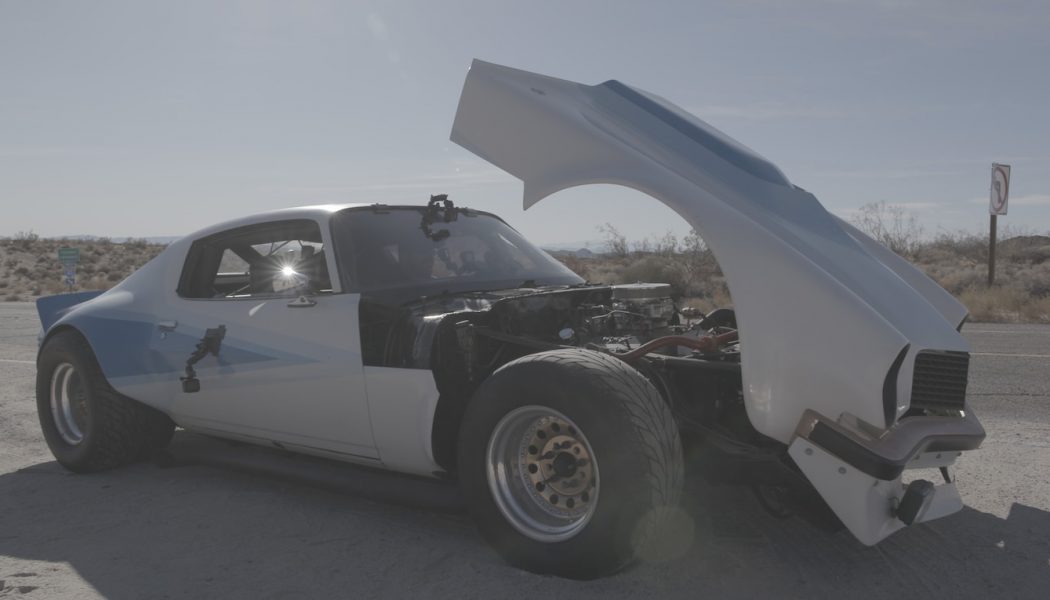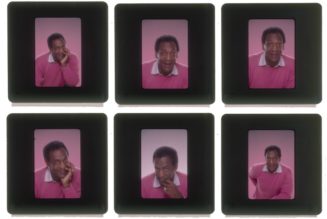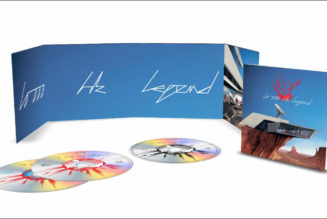Who said buying a project vehicle sight unseen was a bad idea? David Freiburger and Mike Finnegan say it all the time, but they usually include a version of, “Do as I say, not as I do,” somewhere while they walk up to their most recent sight-unseen purchase. But this is Roadkill, and it’s business as usual with this most amazing of project vehicles: Welcome the ultra-wide, couldn’t-be-more-’70s 2nd-gen Camaro to the Roadkill fleet!
We know, it’s beautiful. Yes, that is (as near as makes no difference) three whole feet of tire section in the rear. No, it isn’t a Pro Street build. No, that doesn’t make it a Pro Touring build, either. So what is this shining example of 1970s ingenuity?
Beside being Freiburger’s latest automotive infatuation, the best the guys can guess is it’s a Day Two (of the period) IMSA-look/Mullholland-racer 1970 or 1971 Camaro that has gotten the works. And it’s good, too! Usually on Roadkill, found custom work like this is a pile of booger-welds and bondo, but this Camaro is more than just that badonkadonk.
Well-made and -engineered fiberglass bodywork, a properly laid out interior complete with legitimately cool custom touches and actually-safe safety equipment, side pipes, and just so much stance. Go away, Tesla. You want stance? Freiburger’s got stance. But, aside from all that exposed rear tire, the big attraction for Freiburger was the vintage blow-through Holley twin-turbo small-block Chevy the side pipes were originally built for.
It’s OK, say it slowly: Twin-turbo, blow-through Holley, small-block Chevy. The side-pipes still look cool, but they are just hanging there. The Camaro came with two engines and currently has a naturally aspirated small-block Chevy under the one-piece, hydraulically actuated fiberglass front clip. Finnegan agrees that the twin-turbo engine has to go back in, ASAP.
IMSA-style: The original Pro Touring cars
Back before Pro Street and Pro Touring were ubiquitous in the hot rodding world, if you were a muscle car enthusiast and wanted to go around corners well, you built and styled your car like a Trans Am or Can-Am race car. The 1970s were the heyday for privateer teams and factory-backed operations, duking it out wheel-to-wheel at insane speeds—and in cars anyone could buy like Chevy Corvettes and Camaros and Ford Mustangs.
Every wonder where the “AAR” came from in the famous AAR ‘Cuda? It stands for All American Racers and was Dan Gurney’s road-car racing operation he started with Carroll Shelby in 1964. The 1970 Plymouth AAR ‘Cuda was a dealer-only special built to honor the on-track success Dan and the All American Racers had with the ‘Cuda in Trans Am racing.
Increasing a car’s track width, especially in the rear, and maximizing contact area between the tires and driving surface is the easiest way to increase cornering capability, and race car engineers of the 1970s took that to the extremes, increasing track widths as much as they could and fitting the largest tires allowed by sanctioning bodies. Coupled with the burgeoning aerodynamic technologies of the era and lax rules on retaining original body panels and, all of a sudden, a plain, old second-generation Camaro transforms into a widebody, big-tire, bewinged and spoilered track monster.
Pacific Coast Highway and Laguna Seca Raceway: Badonkadonk Camaro’s Natural Habitat
Southern California car culture isn’t all Deuce Coupes and drag racing. When Freiburger’s ultra-wide Camaro was built sometime around 1979, its styling was the epitome of the Mulholland* crowd—car enthusiasts and street racers who were more interested in tackling the twisties than conquering the quarter-mile.
It’s fitting that Finengan and Freiburger are going to take this IMSA GT race-car-for-the-street north along Pacific Coast Highway to one of the most legendary road courses in the world: WeatherTech Raceway Laguna Seca in Salinas, California. The scenic coastal hills surrounding Monterey Bay are a global epicenter of car culture, playing host to Monterey Car Week—a bucket-list event for even the mildest of automobile enthusiasts—as well as the famed racetrack.
But this wouldn’t be Roadkill if Freiburger and Finengan got to enjoy worry-free cruising up the spectacular two-lane ribbon of tarmac that hugs the California coastline. Freiburger wanted his widebody Camaro to be glorious, but it isn’t. The worn-out linear actuators take minutes to lift that heavy front clip and—very unlike a Roadkill project vehicle—the guys can’t easily remove the work of R.J. Bosscher to get easier access to the very poorly running small-block Chevy.
Who cares?! As Freiburger always says, “Don’t get it right, just get it running,” then get out there and drive. Freiburger is happy to follow his own advice, there. If he and Finnegan didn’t leave Tucson until the Camao was running perfect, we would never find out if Finnegan could light up those 18-inch-wide rear tires, how Freiburger’s blanket caught on fire, if the Camaro can make it through the corkscrew, or even have a show for that matter!
*Editor’s note: Mulholland Drive is a tight, twisty, and very technical road located in the foothills north of Los Angeles, infamous for decades as the grounds of illegal street racing and exuberant driving.










